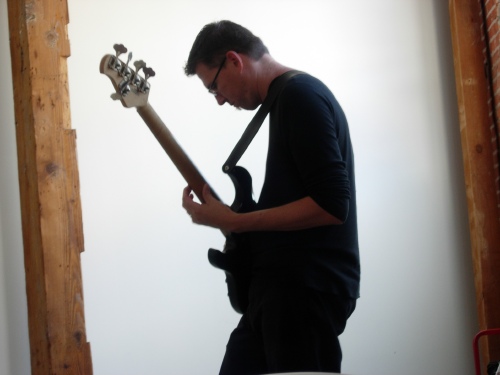Having studied North Indian music, I decided to utilize their concept of 'drone' (playing with a tambura) into my daily practice regimen as it really helps in getting your ears together on fretless bass.
So an easy way to set this up for practice is to use a software program. I personally use Ableton Live and have a whole practice set-up that I use so it is always ready to go. I have drones in all 12 keys set-up plus various chord sequences drum beats and meters all ready to go so I don't have top waste time setting materials up. I am also always adding new materials to it as I need. It really has become an indispensable tool for my practicing.

I then practice scales, arpeggios, and more with the drone so I am always referencing a tonal center. You can do this with tunes and melodies as well. Also, you can try playing with a drone that isn't the tonal center; from the fifth, fourth, third, or wherever. (try from a half-step!) This makes you hear the intervals in a new context. I feel this has really helped in getting my ears together and I hope it helps you out!





